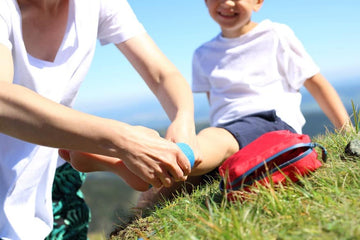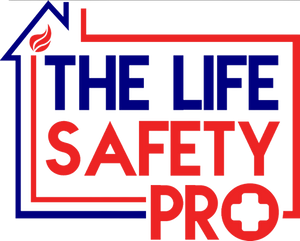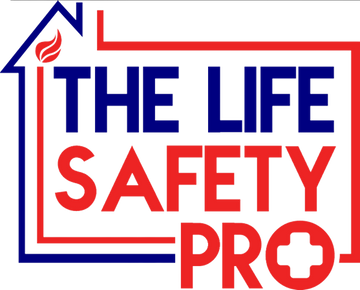News
First Aid Guide for Parents and Caregivers
by Jeremy Manke
on
May 23, 2022
Performing First aid on an injured child can seem scary. With a bit of knowledge and practice, you can be prepared and keep everyone calm while fixing the problem.
What to do When there is an Emergency
-
If you recognize a Medical Emergency, make sure you call 911.
-
Make sure the area is safe for you and the child.
-
If the area is not safe, try to make the area safe. If you cannot, you can move the child to a safe location as a last resort. Moving an injured person can create more injuries or worsen current injuries.
-
As a General Rule of thumb, DON'T MOVE AN INJURED CHILD WHO HAS POSSIBLE INJURIES TO SPINE
-
Personal protective equipment (such as gloves) should be used when possible.
-
Look for anything (such as a medical bracelet or tag) to give you information about health problems.
Here are some common child injuries you may experience and a brief description of what you can do. Remember, nothing beats hands-on training to prepare you for an actual emergency. Make sure you check out local First Aid classes in your area or see what programs we are currently offering. Https://www.TheLifeSafetyPro.com
Fever
Fever in children is usually caused by infection. It also can be caused by chemicals, poisons, medicines, an environment that is too hot, or an extreme level of overactivity.
Take the child's temperature to see if he has a fever. Most pediatricians consider any thermometer reading 100.4°F (38°C) or higher as a fever. Yet, how the child looks and acts is more important than how high the child's temperature is.
Call the pediatrician right away if the child has a fever and:
-
Appears very ill, is unusually tired, or is very fussy.
-
Has other symptoms such as a stiff neck, a severe headache, severe sore throat, an unexplained rash, repeated vomiting or diarrhea, or difficulty breathing.
-
Has a condition causing immune suppression
-
Has had a first seizure but is no longer seizing
-
Is younger than 3 months (12 weeks) and has a temperature of 100.4°F (38°C) or higher
-
Has been in a very hot place, such as an overheated car
To make the child more comfortable, dress him in light clothing, give him cool liquids to drink, and keep him calm. The pediatrician may recommend fever medicines. Do NOT use aspirin to treat a child's fever. Aspirin has been linked with Reye syndrome, a severe disease that affects the liver and brain.
Convulsions, Seizures
If the child is still seizing, allow the seizure to continue and remove items from the area that could cause injury during the seizure. Holding anyone down who is having a seizure is NOT recommended and can cause more harm to the child.
-
Protect their head and NEVER put anything into the child's mouth. (It could cause a choking hazard and more injury)
-
If the child is breathing, lay them on their side to prevent choking or aspiration. Call 911 or your local emergency number for a prolonged seizure (more than 5 minutes).
-
If the child is not breathing and you notice signs of life, start to rescue breathing for the child.
Stings, Bites & Allergies
-
Stinging Insects: Remove the stinger as soon as possible with a scraping motion using a firm item. (such as the edge of a credit card) Using Tweezer on a stinger could rupture the venom sack allow the reaction to become worse.
-
Wash the area – using soap and water.
-
Relieve the Pain - Put a cold compress on the bite to relieve the pain. If your First Aid kit provides one, you may use a sting relief pad.
-
Severe Reaction - If trouble breathing, fainting; swelling of lips, face, or throat; or hives over the entire body occurs, call 911 right away.
-
Minor Reaction - For hives in a small area, nausea, or vomiting, call the pediatrician or Poison Control Hotline (1-800-222-1222). Have the pediatrician check any bites that become red, warm, swollen, or painful or symptoms are not decreasing.
-
Animal or Human Bites: Wash the wound well with soap and water. The child may need additional treatment. Call the pediatrician.
-
Ticks: Use tweezers to grasp as close to the head of the tick. Pull the tick away from where it is attached. Call the pediatrician if the child develops a rash or fever. Early treatments are available if needed. You may notice a "bullseye" mark at the site.
-
Snake Bites: Identify the snake if you can do it safely. Take the child to an emergency department if you are unsure of the type of snake or if you are concerned that the snake may be poisonous. Keep the child at rest. Minimize movement of the affected area. Do not apply ice. Positioned at or below the level of the heart
-
Allergy: Swelling, problems breathing, and hives may be signs of severe allergy. Call 911 or your local emergency number right away. Anytime you notice difficulty breathing, you should call for help IMMEDIATELY.
Eye Injuries
Eye injuries can occur for various reasons. Common Child eye injuries involve traumatic injury to the eye, or liquid/fluid splashed into the eye. If an eye injury occurs, you should evaluate and contact the proper resources.
-
Do NOT touch or rub an injured eye. Do NOT apply any medicine to the eye. Do NOT remove objects stuck in the eye. If stuck in the eye, cover both eyes.
-
Flush with water for at least 15 minutes. Ensure the affected eye is lower when flushing.
-
Cover the painful or injured eye until you can get medical help.
-
Call Poison Control Hotline (1-800-222-1222), pediatrician, or 911 for further advice.
Burns
Burns can occur for different reasons. Prevention is the best way to stop most burns. Make sure you are keeping hot items out of the reach of children and not leaving hot items unattended. If a burn does occur, follow the treatment guidelines below.
General Treatment: First, stop the burning process by removing the child from contact with hot water or a hot object. If clothing burns, smother flames or stop, drop, and roll to put out the fire. Remove any loose-fitting clothing. Anything attached to the skin remains. Use Trauma Shears from a first aid kit to help you cut around the area.
-
Run cool water over burned skin until the pain stops. Stop the cooling process if the child starts to shiver. This could be a sign of shock. Only run water over minor burn injuries.
-
Do not apply ice, butter, grease, medicine, or ointment. Using these can cause the burn to continue under the skin, causing additional injury and increased healing time.
Burns with Blisters: Do not break the blisters. Ask the pediatrician how to cover the burn. Burns to sensitive areas need to be evaluated by an emergency provider. (face, hands, feet, or genitals)
Large or Deep Burns: Call 911 or your local emergency number. After stopping and cooling the burn, keep the child warm with a clean sheet covered with a blanket until help arrives. Cover the burned area with a dry dressing.
Electrical Burns: DO NOT TOUCH until you disconnect electrical power. Once the power is off, treat it like a regular burn. Check for areas where the electricity may have exited the body. ALL electrical burns need to be seen by a doctor.
Nosebleeds
Keep the child in a sitting position with the head tilted slightly forward. NEVER tilt their head backward. The blood can obstruct the airway and cause them to stop breathing. Apply firm, steady pressure to both nostrils by squeezing them between your thumb and index finger for 5 minutes. If bleeding continues or is very heavy, call the pediatrician or seek emergency care.
Conclusion
There are many common childhood injuries. The best way to care for an injury is prevention. Being vigilant and aware of possible causing can prevent the injury. If the problem does occur, I hope some of these steps will help you. If there are any additional injuries you would like to cover, let us know. Nothing ever substitutes actual hands-on training by an accredited instructor.






